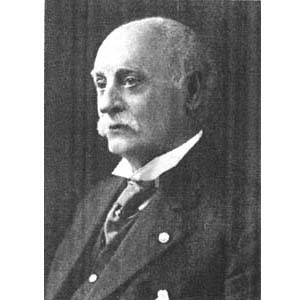
2023 NIA Hall of Fame Inductee
Homer Brooke
|
|
2023 NIA Hall of Fame Inductee
Homer Brooke |
Homer Brookes was very active in glass making from the 1860s through the 1920s. He had a significant influence in both insulators and bottles with many inventions and involvement in glass companies. He immigrated to the US as a child from Yorkshire, England and he apprenticed at his father's shop, the Jersey City Glass Works which he took over in 1862 when his father passed away. He provided molds for Brookfield in the 1860s and on January 25, 1970 was issued Pat #99,145 for an insulator press. This patent date appears on numerous insulators including Brookfield. He won patent priority suits against both Hemingray and Brookfield in 1973. In August 25th, 1874 he was issued patent #154,451 for a no tie insulator with three "fingers" to hold the wire. This was implemented in the recently discovered CD 128.8 insulator and is virtually identical to the Harloe patent issued almost 20 years later! Through the remainder of the 1870s he was issued two more patents related to insulator molds and presses as well as many other glass making patents. On August 14th, 1883 he was issued patent #283,321 for an insulator press for forming threads. This patent date is marked on several insulator styles including many that are in the deep blue color that is known as "Brooke's Blue" in the hobby. In 1891 Homer Brooke purchased the glass works of Seidlmyer Bros., Long Island City, NY to make glass insulators. It is not known what insulators were made or for how long, but Brooke continued to market "The Homer Brooke Mold Co." through the 1890s. Brooke remained active in the glass business after the turn of the century being involved with several glass works including C.S. Knowles, Hemingray, and Ball Brothers. He was involved in several patent disputes on various glass making tools. Overall Homer Brooke was instrumental for significant glass manufacturing improvements during his lifetime including many insulator developments. He was one of the key developers of the mechanization of the glass bottle and insulator industry through his work with feeding devices and semi-automated presses including the automatic flowing of glass to the machines, a process which displaced "hand gathering. Given the breadth of his involvement in the glass business it is likely that his influence goes well beyond what is captured here. |